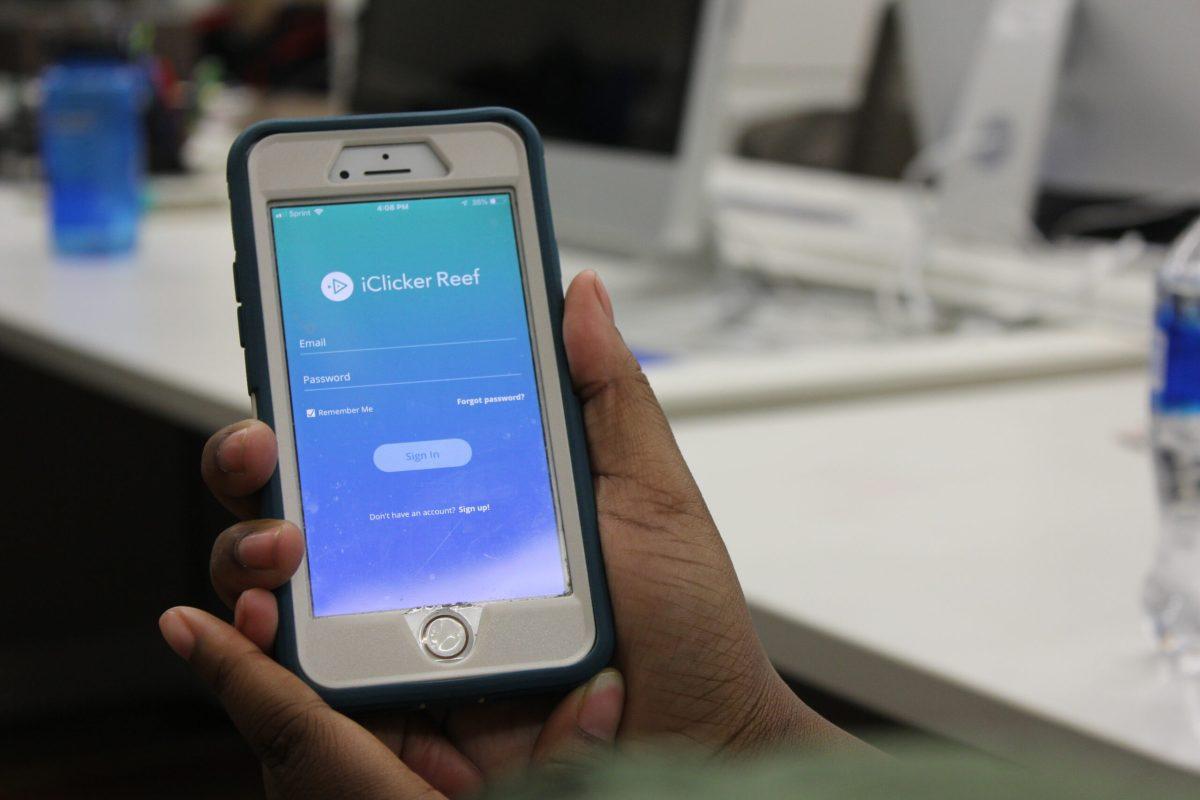
An initiative to make iClicker free for MU students was announced in June, according to Tanys Nelson, manager of learning technologies for MU. The initiative went into effect at the beginning of the 2019 fall semester.
In addition to making the technology free, the initiative also streamlines its usage by ensuring that instructors who wish to utilize classroom technology only use iClicker, as opposed to some other platform such as the online textbook service Top Hat.
iClicker is a student response system that instructors generally use for a few different reasons, according to Nelson. She said the primary reason is to capture attendance, but that instructors also use it for quizzing students on the content covered in the course (similar to the game Kahoot!) or for posting discussion-based questions.
Nelson and her team were instrumental in the process of launching the initiative to make this technology free for students. They are part of a technology evaluation subcommittee that also includes faculty, technology support staff and administrators across campus.
“Our role is to go out and research and investigate technologies to find the best technologies to meet the needs of the campus,” Nelson said.
Nelson also said her team noticed an uptick in classroom technology usage across campus three or four years ago. This, combined with the results of an annual survey of campus technologies, were illuminating for Nelson.
Through the survey, students expressed discontent that they had to pay for iClicker in one class while oftentimes having to pay for completely different technologies in other classes.
“The fact that students were being forced to purchase two different technologies, or sometimes three, that all pretty much serve the same purpose… we knew that we needed to address that,” Nelson said.
Nelson’s team launched a review to get a full scope of the technologies being used on campus. After finding that most classes at MU use iClicker, the committee assembled a report and submitted it to the MU Information Technology Committee, which decides its budget annually.
“We had to put forward a proposal that basically said, ‘We feel that this need [for iClicker] is that strong on campus that the MUITC should use some of the instructional technology fees to pay for this for our students,’” Nelson said.
After the proposal was approved, the team contacted iClicker and requested quotes for how much the initiative would cost given the number of instructors that would utilize it and other factors.
Charles Rigdon, a technology resource coordinator for MU Course Design & Technology, said that at one point the team organized a focus group with various faculty members to discuss the goals of the initiative.
“We had two or three groups of conversations with faculty, and they boiled down to some common themes,” Rigdon said. “Students having to pay and having multiple systems were issues. At one point, an instructor said, ‘You all just need to make a decision so that I know what to use.’ They just wanted us to sort it out for them and say, ‘This is what you should do.’”
After considerable planning and discussing with faculty members throughout MU, the decision was finally made in June to issue a site license, allowing iClicker technologies to be accessible to all students if need be.
According to data collected by Rigdon, with the site license it is anticipated that over 10,000 students will be using iClicker over the next year, saving them more than $190,000. There are currently about 140 courses using iClicker for the fall semester, although more courses are expected to use it in the near future as instructors are onboarded.
“We’ve gotten largely positive reactions from students,” Rigdon said. “Students are appreciative that they don’t have to purchase anything now. They’re also happy that it’s streamlined. Set expectations in every class is pretty important.”
Dr. Maurine Raedeke teaches diet therapy for health professionals, in which she utilizes iClicker. She said that she integrates iClicker multiple choice questions into every lecture.
Dr. Raedeke said that not only does the technology make her students more engaged, but it is also a fun way for her to bring creativity into the class.
“I’ve had clicker questions that create scenarios, and it’s really fun,” she said.
Drew Baker, a sophomore mechanical engineering major, said he has used iClicker in the past and will use it in his physics class this semester.
“It’s really easy to use … and it can be helpful in keeping people engaged during the lecture,” he said.
Baker is grateful that the university launched this initiative, as he believes it will immensely help out many students.
“Class materials are hard to plan for moneywise, and some students may not have a way to afford them or they may have to take out food funds and other essential savings to invest in mandatory technology for classes,” he said. “So it’s definitely helpful to keep technology affordable because everyone has a different background regarding money.”
_Edited by Ben Scott | [email protected]_